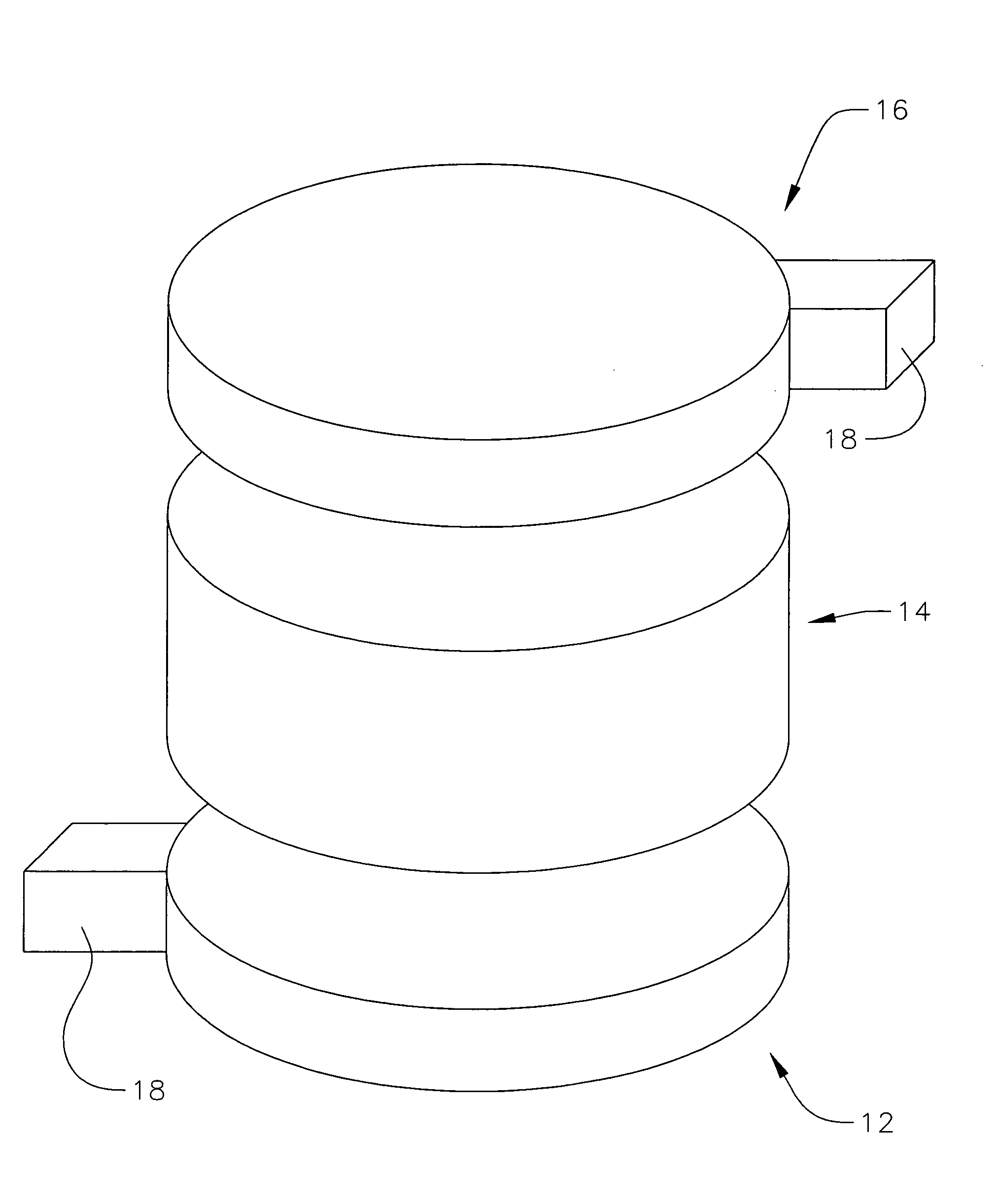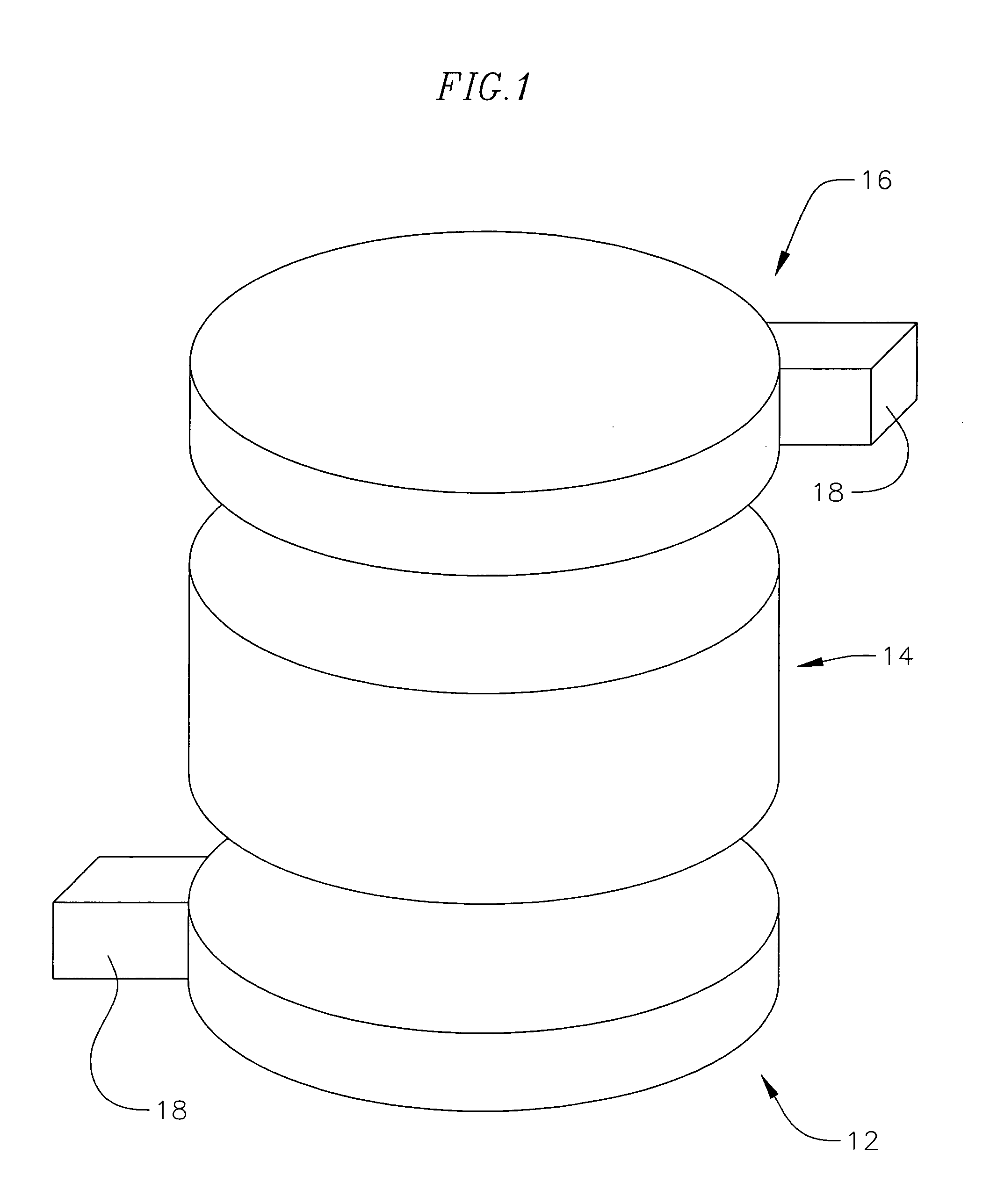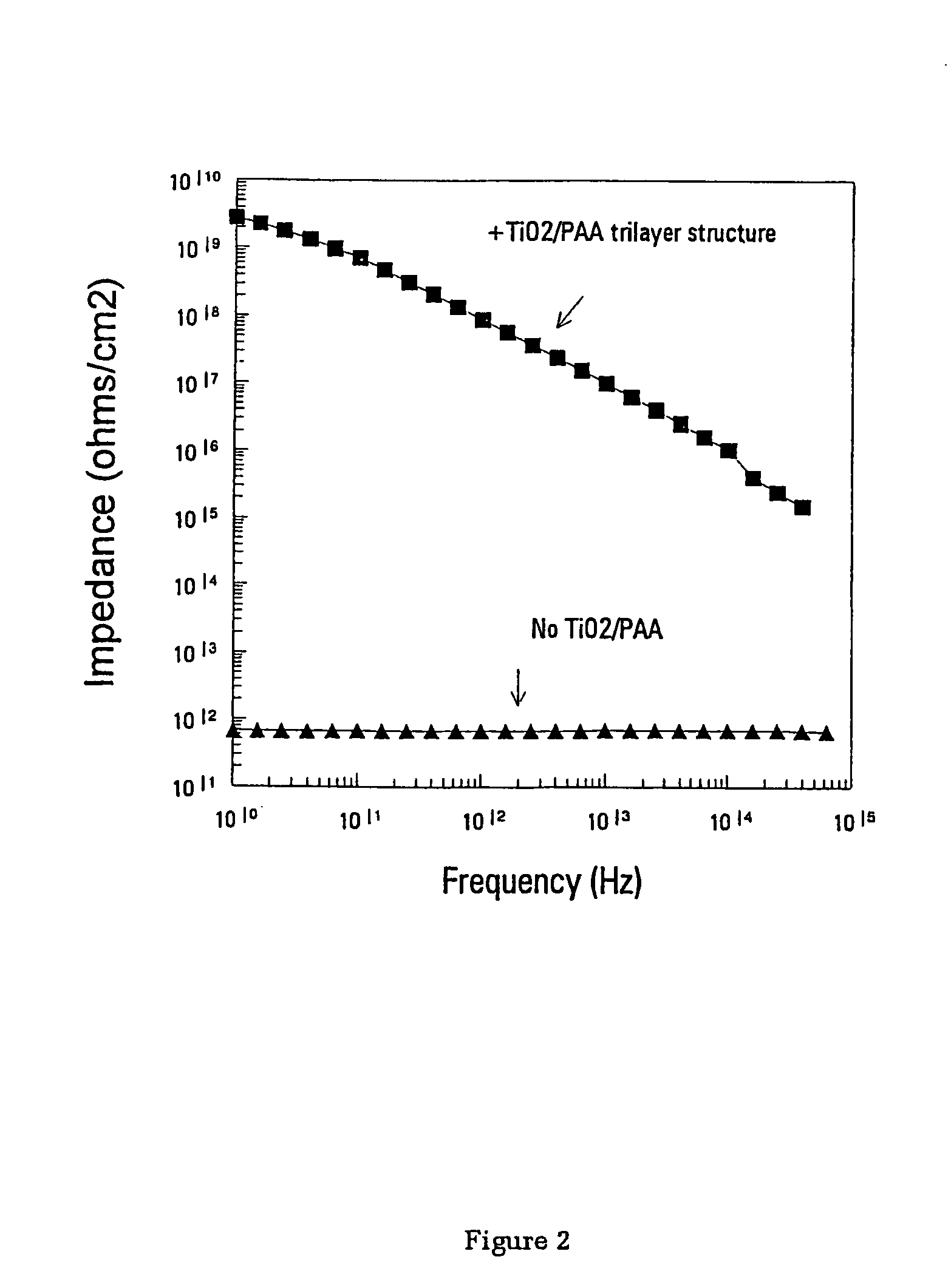Three dimensional array films
a three-dimensional array and film technology, applied in the direction of crystal growth process, electrolytic capacitor, polycrystalline material growth, etc., can solve the problems of cracking films, difficult control of films, and needing conducting substrates
- Summary
- Abstract
- Description
- Claims
- Application Information
AI Technical Summary
Benefits of technology
Problems solved by technology
Method used
Image
Examples
example 1
Synthesis of Nanoparticles
[0068]Standard synthetic methods were used for the synthesis of nanoparticles. Typical methods may be found in publications such as: Clusters and Colloids, from Theory to Applications, G. Schmid (Ed.), 1994, VCH Publishers New York, USA; Nanoparticles and Nanostructured Films, J. H. Fendler (Ed.), 1998, Wiley-VCH. Unless otherwise specified water-soluble, sodium citrate coated gold nanoparticles of approximately 15 nm in size (hereafter known as Au20 gold nanoparticles) were synthesised according to the method of Schmitt, J. et al Adv. Mater., 1997, 9(1), 61. Water-soluble, sodium citrate coated gold nanoparticles of approximately 2, 60 and 120 nm in size (hereafter known as Au2, Au60, Au120 gold nanoparticles respectively) were synthesised according to the method of Grabar, K. C. et al., Langmuir, 1996, 12, 2353. Tetraoctylammonium bromide coated gold nanoparticles of approximately 8 nm in size (hereafter known as Au8 gold nanoparticles), that were soluble...
example 2
Formation of Supported Nanoparticle Films from Aqueous Solution on Porous Supports
[0069]To an aqueous solution of Au20 gold nanoparticles (10 ml) was added 200 μl of a 10 mM solution of 2,2′-hydroxyethyl disulfide in water. The 2,2′-hydroxyethyl disulfide was used to cross-link the gold nanoparticles. The solution was mixed and left to cross-link for 10 minutes. During this time the colour of the solution changed from a wine-red colour to a blue-black colour but no visible precipitate had formed. After 10 minutes the solution was filtered through a MF-Millipore™ mixed cellulose ester filter membrane with 0.22 micron pore size supported on a porous frit. The filtration was carried out using either external pressure to force the solution through the MF-Millipore™membrane or by applying a vacuum to the reverse side of the membrane. After filtration the nanoparticle film dries to a metallic-looking, reflective, coherent film. Other membranes such as polyvinylidine fluoride membranes e.g...
example 3
Formation of Supported Nanoparticle Films from Organic Solutions
[0070]In analogous fashion to that in Example 2, to a solution of Au8 gold nanoparticles in toluene was added 100 μl of a 10 mM solution of an α,ω-alkane-dithiol (such as 1,2-ethanedithiol, 1,4-butanedithiol, 1,8-octanedithiol, 1,15-pentadecanedithiol) in an organic solvent such as toluene or ethanol. The solution was mixed and left to cross-link for 1–30 minutes depending on the rate of cross-linking. During this time the colour of the solution changed from a wine-red colour to a blue-black colour but no visible precipitate had formed. After 10 minutes the solution was filtered through a Millipore™ Durapore membrane (0.22 micron pore size) or a Whatman Anopore™ (20 nm pore size) membrane supported on a porous frit. Routinely, 30 mm diameter membranes were used although both smaller (13 mm diameter) as well as larger (e.g. 45 mm, 90 mm or larger diameter) membranes can be readily used. The filtration was carried out usi...
PUM
| Property | Measurement | Unit |
|---|---|---|
| size | aaaaa | aaaaa |
| size | aaaaa | aaaaa |
| thickness | aaaaa | aaaaa |
Abstract
Description
Claims
Application Information
 Login to View More
Login to View More - R&D
- Intellectual Property
- Life Sciences
- Materials
- Tech Scout
- Unparalleled Data Quality
- Higher Quality Content
- 60% Fewer Hallucinations
Browse by: Latest US Patents, China's latest patents, Technical Efficacy Thesaurus, Application Domain, Technology Topic, Popular Technical Reports.
© 2025 PatSnap. All rights reserved.Legal|Privacy policy|Modern Slavery Act Transparency Statement|Sitemap|About US| Contact US: help@patsnap.com



